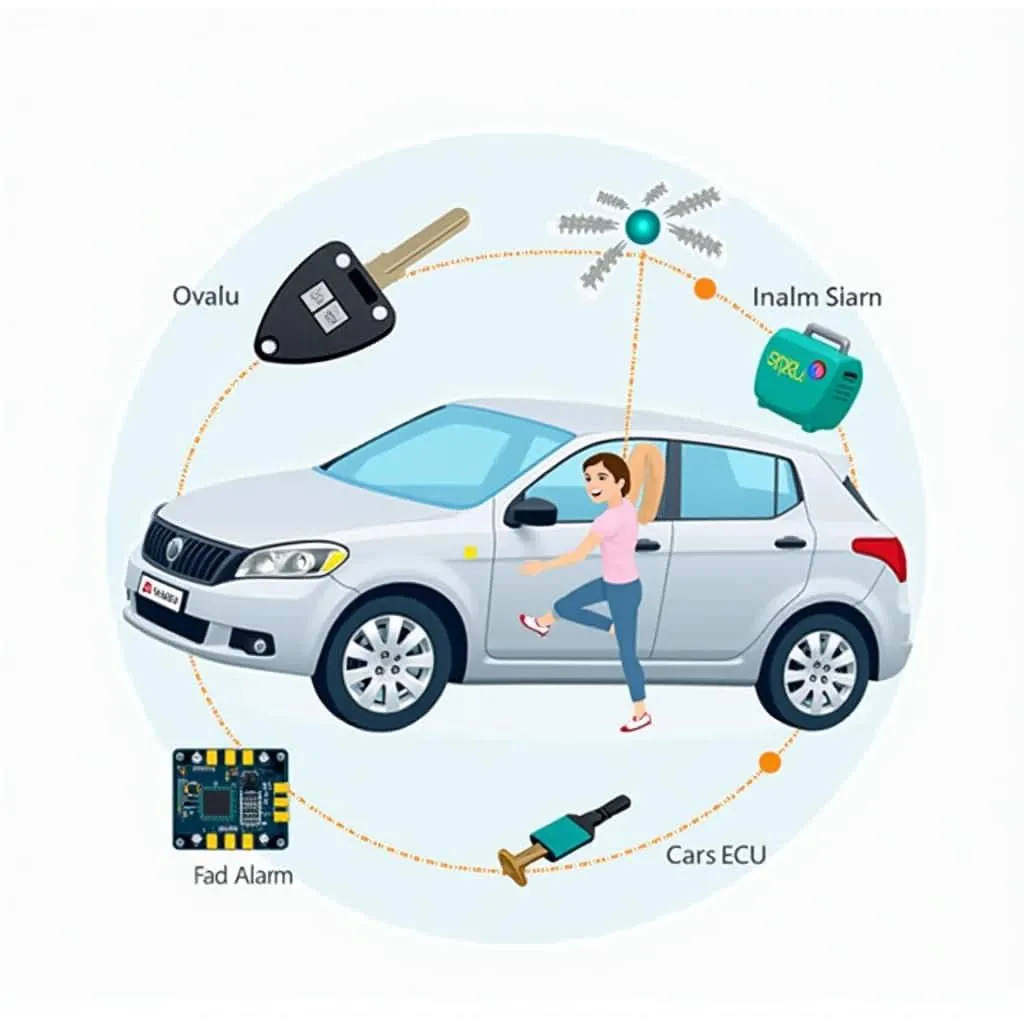A glowing brake warning light on your 2004 Toyota Solara dashboard can be a nerve-wracking experience. It usually signals a problem with your braking system, potentially compromising your safety on the road. This issue often goes hand-in-hand with the ABS (Anti-lock Braking System) light illuminating on your dashboard. Let’s delve into the common reasons behind a lit brake warning light, specifically in the context of a 2004 Toyota Solara, and explore potential solutions.
Understanding Your Solara’s Brake Warning System
Your Solara is equipped with a sophisticated system designed to alert you to potential brake issues. When the brake warning light comes on, it’s crucial to understand what it’s trying to tell you.
- Solid Brake Warning Light: This typically indicates one of two things: either your parking brake is engaged (a simple fix!), or there’s a problem with your brake fluid level.
- Flashing Brake Warning Light: A flashing light usually signifies a more serious problem, often related to the ABS system.
Common Causes of a Lit Brake Warning Light on a 2004 Toyota Solara
Several factors can trigger the brake warning light in your Solara. Here are some of the most prevalent causes:
1. Low Brake Fluid Level
The most common culprit behind a lit brake warning light is low brake fluid. Brake fluid is the lifeblood of your car’s braking system, transmitting the force from your foot on the brake pedal to the wheels, causing the vehicle to stop.
What to Do:
- Check the brake fluid level in the reservoir. The reservoir is usually located near the firewall on the driver’s side of the engine compartment.
- If the fluid level is low, add the appropriate DOT 3 or DOT 4 brake fluid. Refer to your owner’s manual for the correct type.
 Toyota Solara Low Brake Fluid
Toyota Solara Low Brake Fluid
Important: If you find yourself adding brake fluid frequently, it’s crucial to have your braking system inspected for leaks by a qualified mechanic.
2. Worn Brake Pads
Brake pads are designed to wear down over time. As you apply your brakes, the pads press against the brake rotors, creating friction that slows the vehicle. This friction eventually wears down the pads.
How to Tell If Your Brake Pads are Worn:
- Squealing or screeching noises when braking.
- Vibration or pulsation in the brake pedal.
- The brake pedal feels “spongy” or goes closer to the floor than usual.
What to Do: If you suspect worn brake pads, have them inspected and replaced by a mechanic as soon as possible.
 Toyota Solara Worn Brake Pads
Toyota Solara Worn Brake Pads
3. ABS Sensor Issues
The ABS, or Anti-lock Braking System, is a critical safety feature that prevents your wheels from locking up during hard braking. It relies on sensors at each wheel to monitor wheel speed. A malfunctioning ABS sensor can trigger both the brake warning light and the ABS light.
Signs of a Faulty ABS Sensor:
- Intermittent ABS activation, even on dry pavement.
- Erratic ABS light behavior, sometimes turning off and on.
- A noticeable decrease in braking performance, particularly on slippery surfaces.
What to Do: Diagnosing and fixing ABS sensor issues can be complex and often require specialized diagnostic equipment. It’s best to take your Solara to a qualified mechanic or a Toyota dealership.
4. Brake Master Cylinder Problems
The brake master cylinder plays a vital role in converting the force you apply to the brake pedal into hydraulic pressure. This pressure then travels through brake lines to the calipers, actuating the brakes. A failing master cylinder can cause a loss of braking power and trigger the brake warning light.
What to Do: Brake master cylinder issues require professional attention. Contact a qualified mechanic to diagnose and repair the problem.
FAQs: Addressing Common Questions About the 2004 Solara Brake Warning Light
1. Can I drive my Solara with the brake warning light on?
It’s highly discouraged. A lit brake warning light signifies a potential problem with your braking system, compromising your safety. It’s crucial to address the issue promptly.
2. Is it safe to add brake fluid myself?
Yes, adding brake fluid is a relatively simple task. However, ensure you use the correct type of brake fluid specified in your owner’s manual and avoid spilling any on painted surfaces.
3. How often should I get my brake fluid flushed?
It’s generally recommended to flush your brake fluid every 2-3 years or as recommended in your Solara’s maintenance schedule.
4. How long can I drive on worn brake pads?
Continuing to drive on worn brake pads can damage your rotors, leading to more costly repairs. It’s best to have your brake pads inspected and replaced as soon as you notice any signs of wear.
Addressing Your 2004 Toyota Solara’s Brake Warning Light
Don’t ignore a lit brake warning light in your 2004 Toyota Solara. Addressing the issue promptly can prevent further damage to your braking system and ensure your safety on the road. Remember, while some fixes might be straightforward, others require professional attention. When in doubt, consult a qualified mechanic for proper diagnosis and repair.

